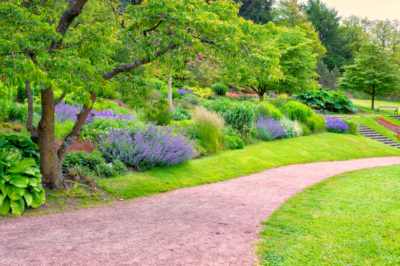Lavender is perfect for the garden for many reasons. The plant’s flowers and leaves can be used for teas, scented sachets or as a spice in the kitchen, and lavender is also a popular food plant for bees, bumblebees and butterflies. Furthermore, the intensely fragrant semi-shrub keeps pests such as aphids away from neighboring plants – not to mention that the lush and colorful flowering plants are a true ornament.

Contents
Hardy lavender varieties for the garden
However, not all of the estimated 25 to 30 lavender varieties can be planted out in the garden without further ado. After all, only the varieties of true lavender are winter-hardy in Europe. In particular, the lavender of the crested variety, which is often planted because of its striking flower shape, and the lavender of the spike variety, which grows quite tall, do not tolerate frost and should therefore not be planted outdoors for the winter. The following varieties are suitable for planting out and overwintering in the garden due to their relative insensitivity to cold:
- Hidcote Blue
- Munstead
- Miss Katherine (special feature: pink flowers)
The varieties mentioned are exclusively true lavender. Varieties of lavandin (Lavandula intermedia) are only hardy, but not winter-hardy. These include such attractive varieties as the white-flowered lavender “Edelweiss” the purple “Grosso” or the light blue “Hidcote Giant”.
The right location for garden lavender
In addition to the appropriate variety, the location must also be right. Lavender needs a full sun, sheltered place in the garden. In partial shade or even shady locations, you will not enjoy your plants for long. In addition, the soil should be well-drained and low in nutrients, which is why lavender thrives excellently in rock gardens or gravel beds. The plant feels most at home in a south-facing location, perhaps against a warming house wall that does not cast shade.
Do roses and lavender go together?
Lavender is often touted as the ideal rose companion, however, while these two plants are a visual match, they do not match in terms of their needs. Roses need nutrient-rich, moist soil and require regular fertilization – but lavender quickly dies in these conditions. Therefore, you should at least plant cultivated roses and lavender with some distance and also prepare the soil for lavender accordingly. For wild roses, in turn, the situation is somewhat different, because they have similar requirements to lavender.
Care for lavender in the garden
Care of garden lavender is not complicated. Neither the plant needs regular watering nor fertilizing. Only regular pruning in the spring and, if necessary, in the summer is necessary so that the lavender does not become woody over time. In addition, you should enrich the soil with a little lime once a year.
Tips & Tricks
Lady’s mantle and cranesbill are particularly suitable companions for cultivated roses. These have similar requirements for location and care and also bloom similarly lushly.

